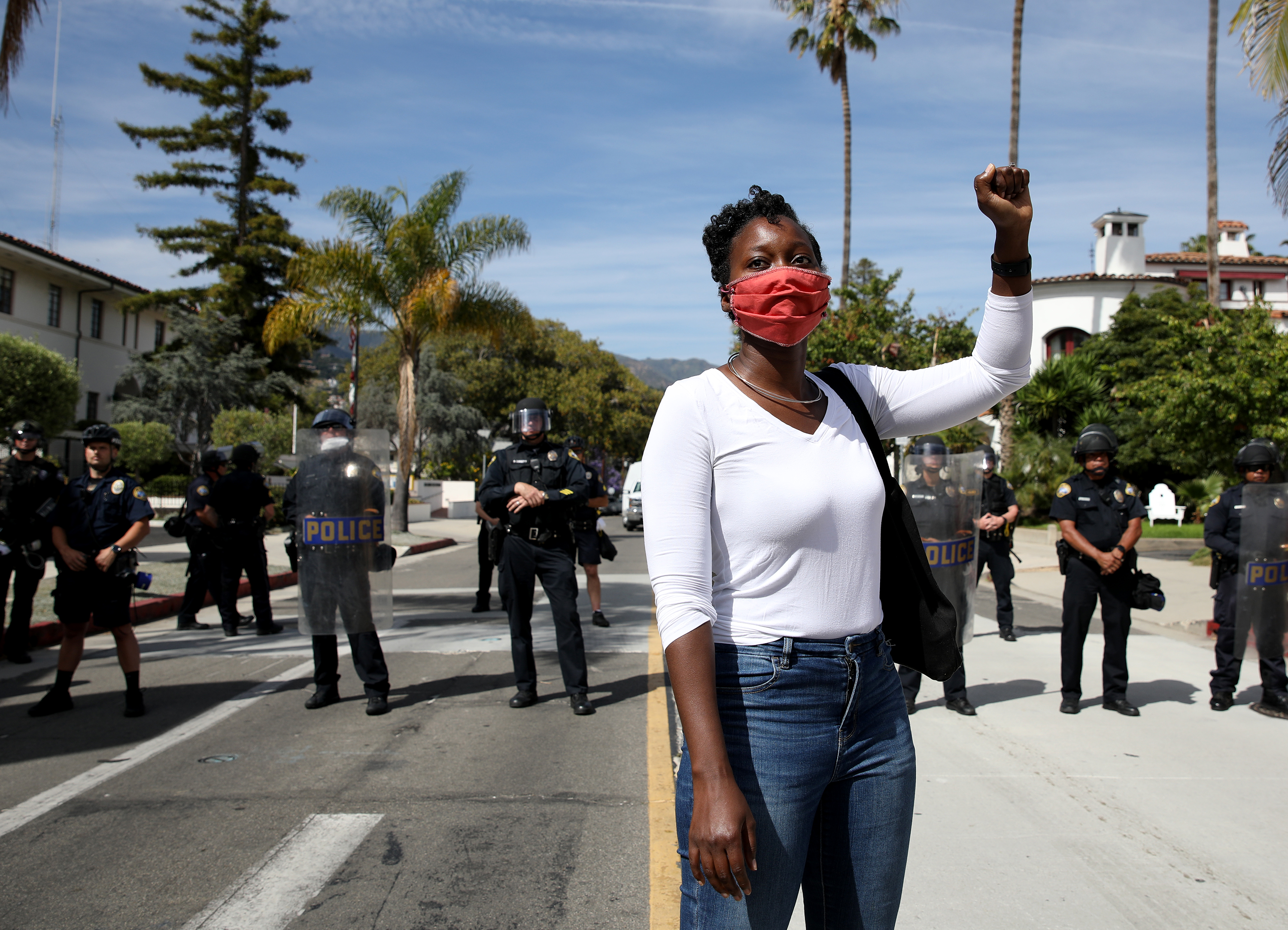Santa Barbara Meets Black Lives Matter Demands
City Council Condemns Police Violence, Moves to Create Independent Review Board

“The first thing I just want to say is I’m sorry,” said Councilmember Kristen Sneddon this week after scores of Santa Barbarans again took to the streets to protest the death of George Floyd and the historic killings of unarmed black Americans by white police officers. “I’m sorry to everyone in the community who has to fight so hard to be heard. Who has to raise their voices so loud and in such numbers to feel that we will act.”
Sneddon and her colleagues voted unanimously Tuesday for a resolution condemning police brutality and declaring racism a public health crisis. The only proposed change to the resolution came from Councilmember Michael Jordan, who asked that the word “national” used to describe police violence be replaced with another term that hits closer to home. “It seems like an attempt to distance the issue away from us,” Jordan said, “rather than recognizing it’s also our issue.” His colleagues agreed to revise the language.
The council also vowed to begin the processes of creating an independent police review board and preserving landmarks of historical significance to Santa Barbara’s black community. “I am extremely proud of my community for speaking up,” said Councilmember Alejandra Gutierrez. “I remember when I was young and loud, and I think a lot of my motivation to sit here now was exactly that drive of wanting change, wanting to be heard.”
Get the top stories in your inbox by signing up for our daily newsletter, Indy Today.
Before the vote was held, however, dozens of public commenters pilloried Mayor Cathy Murillo for not joining Black Lives Matter organizers two weeks ago in their march down State Street, then declining to take a knee in front of a barricade of Santa Barbara police officers dressed in riot gear. Many called for her resignation, accusing her of betraying her campaign promise to represent city residents of color.
In response, Murillo said she’d been humbled by the experience, and she thanked Black Lives Matter (BLM) organizers Krystle Farmer Sieghart and Simone Akila Ruskamp ― who have since become two of her most vocal critics ― for pulling together the successfully peaceful May 31 protest. “It was an effort to tell people, ‘Don’t go back to sleep,’” Murillo said. “We were there angry, we were there grieving, and they were directing us to take action. I heard, ‘Be an ally, and be teachable.’ I am offering myself as an ally, and I hope that I am teachable.”
Murillo admitted that during conversations with fellow councilmember Oscar Gutierrez, they recognized they had not connected with Santa Barbara’s black community in the same meaningful way they have with its Latino community. “We realized there’s much more we can do,” she said. “People have been transformed,” Murillo went on, “and I know that I have. I am committed to change.” Gutierrez asked for “patience and understanding” as he and the other city leaders address demands of BLM and others. “We’re here to learn,” he said.
The mayor also reiterated a request from Councilmember Sneddon that the city organize a series of “sustained, systematic conversations” to address the “sustained, systematic racism” that exists throughout city government, not just among its police.
A number of the public speakers called to “defund” Santa Barbara’s police department, echoing a rallying cry across the country to reduce police budgets and reallocate monies to oft-neglected areas like education, public health, housing, and youth services, which would address the underlying factors that contribute to crime.
Stanley Tzankov noted that the local police budget has increased $9 million over the last three years, despite consistent decreases in crime, and that if it’s approved in its currently proposed form, it would consume a full 32 percent of the city’s bottom line. “Budgets are value statements,” he said. “This is a really unique opportunity to change course and address what public safety really means.” Armed officers may not always be the best people to call upon for help, he explained. Sometimes, a social worker would be the better choice.
By late June, the council will also receive a report from the city staff on the different options it may consider when creating an independent police review board. The three most common types, explained Assistant City Attorney John Doimas, are investigatory boards, which possess subpoena powers; audit or review boards, which review internal investigations; or some combination of the two. The common thread, he said, is adding a layer of public oversight to the police discipline process by enabling an independent body to review incidents and complaints.
Councilmember Eric Friedman acknowledged his relative silence on the dais. “I have been reserved in my comments, because right now I’m about listening to all of you,” he said. “There is a time for action, and that will be in the coming weeks with our budget deliberations.” The first meeting is scheduled for June 15.
At the Santa Barbara Independent, our staff is working around the clock to cover every aspect of this crisis — sorting truth from rumor. Our reporters and editors are asking the tough questions of our public health officials and spreading the word about how we can all help one another. The community needs us — now more than ever — and we need you in order to keep doing the important work we do. Support the Independent by making a direct contribution or with a subscription to Indy+.



